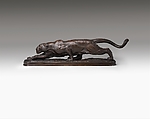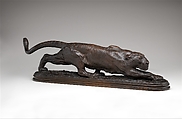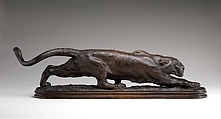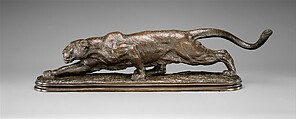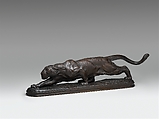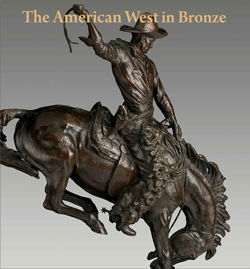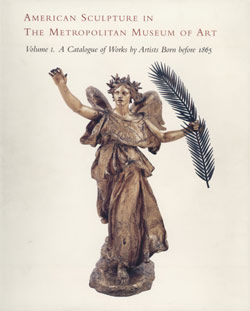Stalking Panther
Alexander Phimister Proctor American
Cast by Roman Bronze Works
Proctor based an early version of "Stalking Panther" on childhood observations in Colorado, studies of panthers in New York's Central Park Zoo, and dissections of cats and cougars. Exhibited at the Chicago World's Columbian Exposition in 1893, the statuette was shown the following year at the Society of American Artists in New York. In 1894, Proctor went to Paris and brought along a plaster cast of "Stalking Panther" in order to continue refining the composition. Using a shaved cat for anatomical reference, he completed the second version and had it cast in bronze. The Metropolitan's statuette is presumed to be from this second version. The work is more than an anatomical assessment of an elongated cat in mid-stride; the piece is a psychologically engaging study of predatory motion toward an unseen prey, reflecting the artist's interest in depicting animals as forces of uncivilized nature.
Due to rights restrictions, this image cannot be enlarged, viewed at full screen, or downloaded.
This artwork is meant to be viewed from right to left. Scroll left to view more.
